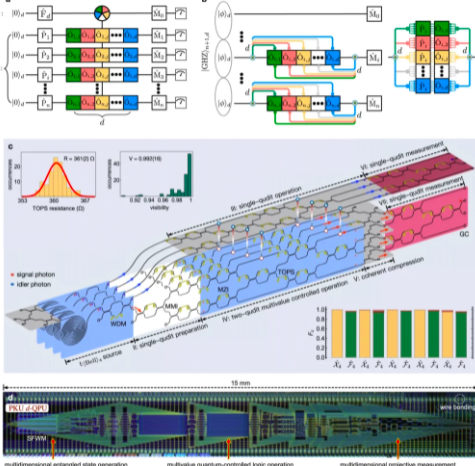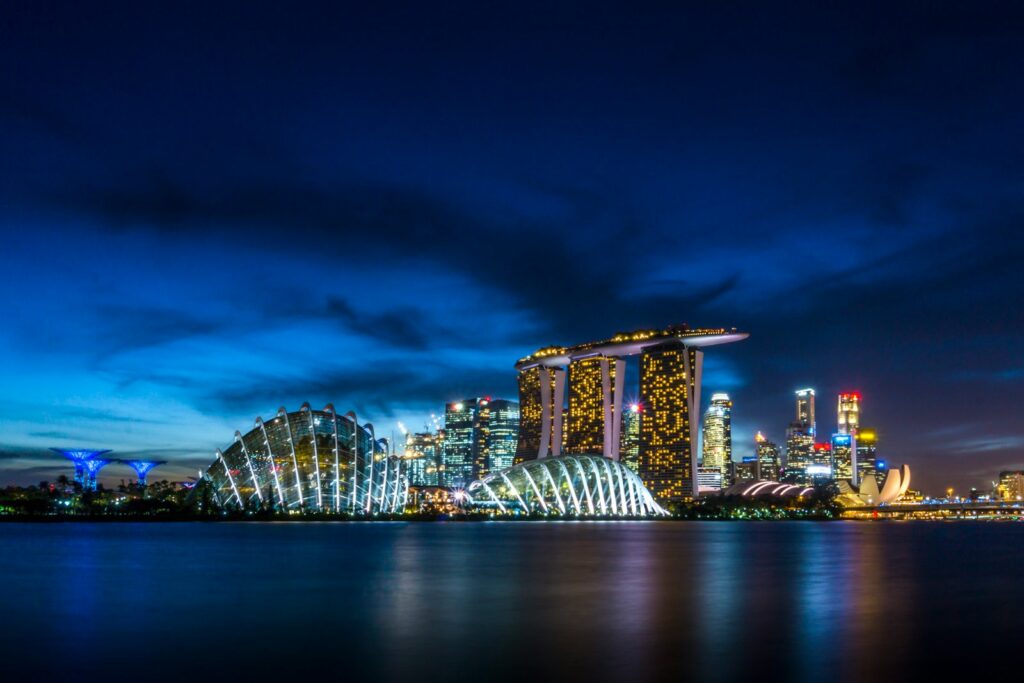
Remember when qubits — with a “b” — used to be so exotic? Scientists say that qudits — that’s with a “d” — offer a multi-level alternative to typical qubits that could provide a larger state space to store and process information, which could lead to less complex circuits and enhanced algorithm efficiency.
Now, an international team of scientists report on a programmable qudit-based quantum processor in silicon-photonic integrated circuits. The researchers, who report their findings in Nature, also demonstrated how the device enhances quantum computational parallelism.
The team said that the integrated photonic quantum technology for qudit-based quantum computing offers enhanced capacity, accuracy and efficiency, and could accelerate the creation of a large-scale quantum computer.

In addition to tipping the scale toward the advantages of using silicon-photonic quantum computers, they suggest that the qudit-enhanced design offers numerous improvements over pure qubit approaches.
“Controlling and programming quantum devices to process quantum information by the unit of quantum dit, i.e., qudit, provides the possibilities for noise-resilient quantum communications, delicate quantum molecular simulations, and efficient quantum computations, showing great potential to enhance the capabilities of qubit-based quantum technologies,” the researchers write.
According to the researchers, the processor monolithically integrates all the key functionalities and capabilities of initialization, manipulation and measurement of the two quantum quart — or, ququart — states and multi-value quantum-controlled logic gates with high-level fidelities.
“By reprogramming the configuration of the processor, we implemented the most basic quantum Fourier transform algorithms, all in quaternary, to benchmark the enhancement of quantum parallelism using qudits, which include generalised Deutsch-Jozsa and Bernstein-Vazirani algorithms, quaternary phase estimation and fast factorization algorithms,” they write.
The team implemented more than one million high-fidelity preparations, operations and projections of qudit states in the processor.
Researchers on the paper include: Yulin Chi, Jieshan Huang, Zhanchuan Zhang, Jun Mao, Zinan Zhou, Xiaojiong Chen, Chonghao Zhai, Jueming Bao, Tianxiang Dai, Huihong Yuan, Ming Zhang, Daoxin Dai, Bo Tang, Yan Yang, Zhihua Li, Yunhong Ding, Leif K. Oxenløwe, Mark G. Thompson, Jeremy L. O’Brien, Yan Li, Qihuang Gong and Jianwei Wang.
Jeremy O’Brien is the CEO of PsiQuantum, a leader in silicon photonics, which the company believes is the only way to achieve the necessary scale required for error correction and deliver a fault-tolerant, general-purpose quantum computer.
Research institutions involved in the work included Peking University, Zhejiang University, Chinese Academy of Sciences, Technical University of Denmark, University of Bristol and The University of Western Australia
For more market insights, check out our latest quantum computing news here.

















